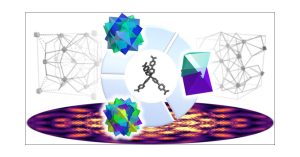In the industry, ethyne gas plays a pivotal role in various processes and applications. It has tremendous potential and offers valuable benefits across multiple sectors. It is a vital component in industrial settings, driving efficiency and innovation. Its remarkable versatility and wide-ranging benefits make it a cornerstone of countless processes, fueling progress and pushing the boundaries of industrial achievements.
In this blog post, you can delve deep into the versatile nature of industrial acetylene and explore its wide-ranging applications that have unlocked new possibilities in various industrial processes.
Table of Contents
ToggleFueling Precision: Welding and Cutting
In metal fabrication, it has become an indispensable fuel source for welding and cutting applications; by combining ethyne with oxygen, an intense and controlled flame is generated, allowing precise and efficient welding of metal components. The high temperature and concentrated heat of ethyne-oxygen flames enable workers to achieve accurate and clean welds. It also serves as an efficient cutting fuel for processes such as flame cutting and thermal lancing, effectively delivering the necessary heat to sever metal with precision.
Illuminating Pathways: Lighting
Ethyne gas has also played a significant role in providing illumination in various industrial and commercial settings. Burning it in specialised lamps produces a bright and steady flame, generating intense and reliable light. In the past, its lamps were widely used in mining operations, offering illumination in underground environments. Today, while other lighting sources have become more prevalent, the historical significance of lighting must be noticed.
Versatile Synthesis: Chemical Building Block
Beyond its welding and lighting applications, acetylene is a vital chemical building block in industrial synthesis. With its unique molecular structure, it readily participates in chemical reactions, making it a versatile precursor for synthesising various organic compounds. It serves as a starting point for producing essential chemicals such as vinyl chloride, which is a key component in producing polyvinyl chloride (PVC), a widely used plastic material. It is also a crucial raw material in synthesising acetic acid, an essential compound in producing various plastics, fibres, and solvents.
Cutting-Edge Technology: Analytical Instrumentation
In analytical instrumentation, the gas finds application as a fuel in specialised flame emission spectrometry. This analytical technique utilises the unique emission patterns produced by burning acetylene to identify and quantify the presence of various elements in a sample. By burning ethyne with a sample in a flame, the distinctive emission spectra of different elements can be observed and analysed, providing valuable insights into fields such as environmental analysis, material testing, and forensic investigations.
Energy Potential: Fuel Source
With growing interest in renewable energy sources, ethyne has also shown promise as a potential fuel source. It can be derived from biomass and waste materials, offering a renewable and sustainable alternative to traditional fossil fuels. Although still in the infant stages of development, research and experimentation in utilising ethyne as a clean energy source are ongoing, highlighting its potential as a future contributor to the global energy landscape.
Conclusion
Industrial acetylene, a gas with diverse applications and impressive versatility, has unlocked new possibilities in multiple industrial sectors. From its critical role in welding and cutting processes to its historical significance in lighting, ethyne has proven its worth. Moreover, its value extends beyond practical applications, as it serves as a crucial building block in chemical synthesis and finds utility in analytical instrumentation. With ongoing advancements and innovative applications, it continues to unlock new potential, contributing to the progress and evolution of various industries.







